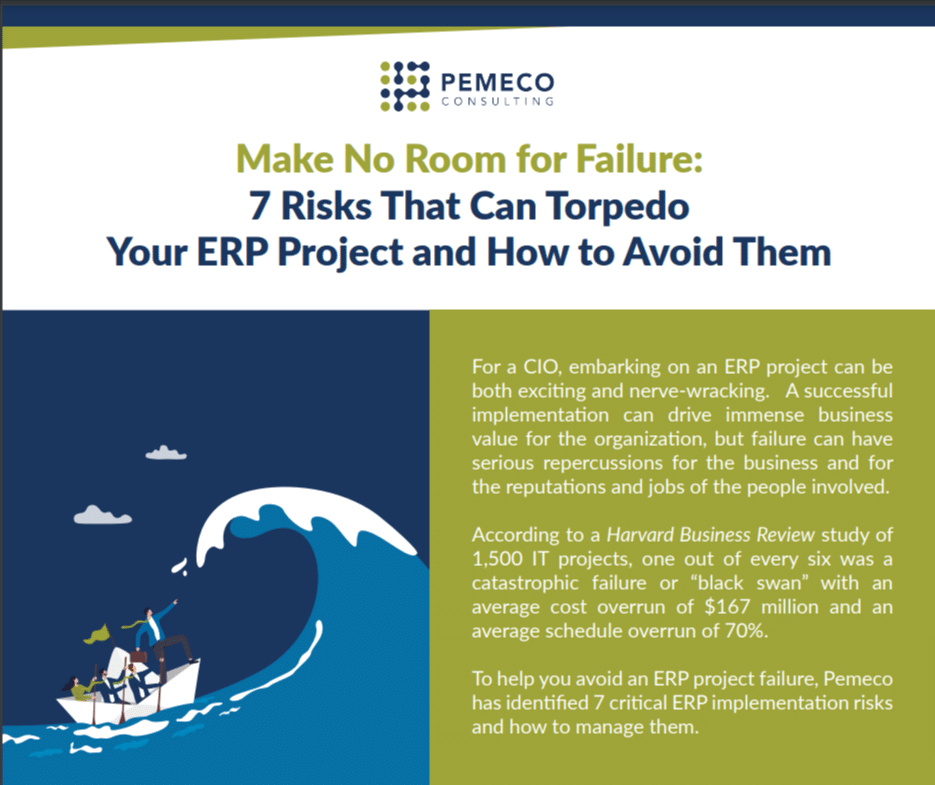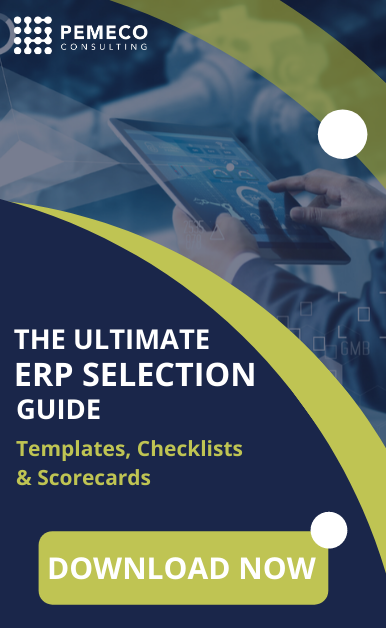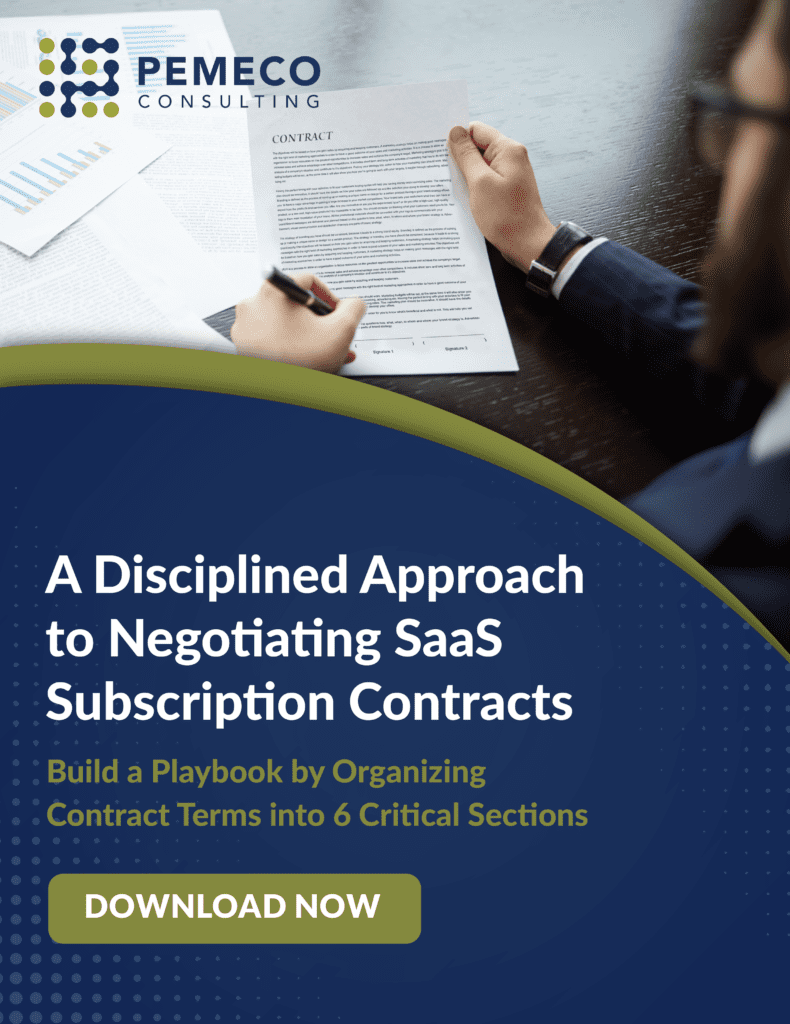According to our ERP benchmark survey of manufacturing and distribution leaders, a mere 32% of all ERP selection projects succeeded. This means that 68% of all ERP projects were doomed to fail before implementation had even started. One interpretation of these statistics is that that the majority of business leaders underestimate the complexity of ERP selection.
Minimize Sales Bias with Detailed Business Requirements
According to the survey results and my interviews of business executives, most leaders understand that ERP projects are, at their core, business improvement projects.
However, a big problem is that most leaders don’t do a good enough job of ensuring that their business’ requirements drive the ERP procurement process. By failing to do so, ERP buyers give the vendors an opportunity to turn the purchase process into a sales process. And, once the vendors are given a chance to set the agenda, they have an opportunity to influence the outcome.
This type of vendor-driven influence is called sales bias. It manifests itself when there’s uncertainty about what the buyer needs and how it intends to satisfy those needs. There’s nothing inappropriate about sales bias – it’s how good sales people succeed at selling.
Though a biased sales process is good for the seller, it’s not very good for the buyer. A buyer doesn’t want to buy a particular ERP system because he’s somehow been influenced. Rather, he wants to buy an ERP system because it’s the right fit.
And, fit is far more difficult to achieve than most companies realize. Regardless of how standard a company thinks it’s requirements might be, it’s unlikely that an arbitrarily chosen system will be able to handle them. The point I’m driving at is that it’s very dangerous to make an assumption about fit based on a perception of one’s own requirements. Fit is like a puzzle. No matter how simple the piece may be, the puzzle can’t be completed without the right connector.
What an ERP buyer has to do, therefore, is first understand the shape of its own puzzle piece before it starts looking for ERP systems. Only once it understands its own business requirements will it have put itself in a position to control the procurement process.
Set the Purchase Agenda with Appropriate Procedures
ERP selection procedures are very important to a buyer’s decision-making process. They enable the buyer to control the flow and content of the information they’ll be required to evaluate.
Defining the procedures also allows the buyer to establish an authoritative – or psychological – advantage over the seller. In many ways, buyers can use procedures to send messages that they’re in control of the purchase process because 1) they knows their own requirements, and 2) they know how best to evaluate proposed solutions.
To establish effective procedures, it’s important for the buyer to elicit meaningful participation from the vendors. Usually, this involves giving the vendors enough time to prepare useful responses. It also usually involves giving the vendors insight into their evaluations process. Our experience is that procedural transparency can yield higher quality responses.
Use Business Needs as the Benchmark for ERP Requirements
Proper procedures are only part of an effective procurement process. It’s also important for buyers to define meaningful substantive requirements. They should use these to inform the vendors what a successful solution should be capable of accomplishing. They should also use them as benchmarks to evaluate proposed solutions.
The requirements should be clear and unambiguous. Since ERP is intended to manage a company’s informational flows and transactions at a business process level, it’s important that many of the requirements be defined at that same level. (An example of a process-level requirement for item costing is that the ERP system be capable of allocating freight burdens relative to a carton’s volume in a shipping container.)
A final point worth discussing is the importance of user participation. No one knows their department’s business processes and requirements better than the users themselves. This puts them in the best position to help define the requirements and evaluate the systems against those requirements. Involving the users also acts as an important change management tool. By giving users a sense of ownership over a portion of the ERP project, they’re more likely to buy into the system during and after implementation.
Evaluate These Oft-Ignored Areas: Implementation, Development and Support
It’s important to highlight a few additional substantive areas that an ERP buyer should evaluate.
The first is implementation. In many respects, the assessment of software functionality represents the evaluation of the potential for benefit. However, it’s the implementation component that translates that potential benefit into an actual benefit.
When assessing implementation capabilities, it’s important for management to remember that people – not firms – implement systems. Thus, management should ensure that it’s evaluating the proposed consultants, including their experiences and capabilities.
Finally, management should take steps to do its due diligence with the understanding that ERP is intended to be a long-term investment (10 years, on average) – and that the software should be capable of meeting future needs. At a minimum, it should evaluate the vendor’s commitment to long-term product development and support. It should also assess the vendor’s viability as a going concern; since the product’s future is closely (but not always uniquely) tied to the vendor’s future.
To conclude, successful ERP selection partly depends on management’s ability to avoid falling into the potentially fatal sales bias trap. To do so, it needs to assert control over the selection project by defining appropriate procedural and substantive requirements. This will help it ensure that it’s business needs drive its purchase decision, as opposed to having its purchase decision dictated by a vendor’s sales agenda.
If you’re concerned that your organization might be exposing itself to too much ERP selection risk, give us a call. We would be happy to discuss whether your project might benefit from an ERP selection risk assessment and mitigation plan.
Contact our ERP experts today.
Pemeco Consulting – a vendor agnostic ERP consulting firm – has an unrivaled 40 year history of delivering ERP success. Learn more about the Pemeco Difference.
Download The Ultimate ERP Selection Guide: Templates, Checklists & Scorecards
Whether your company is in the early stages of planning its digital transformation or is evaluating ERP vendors, you need to make sure you’re making the right decisions at each stage.
The Ultimate ERP Selection Guide: Templates, Checklists & Scorecards has powered hundreds of companies to select the right software at each stage. These tools and templates will power your project with best-practices so you can make the right decisions for your ERP project teams, requirements, budgets and evaluation of vendors, as well as equip you with ERP demonstration script templates, selection scorecard template, analysis of best-practices, and digital transformation and ERP selection checklist.







